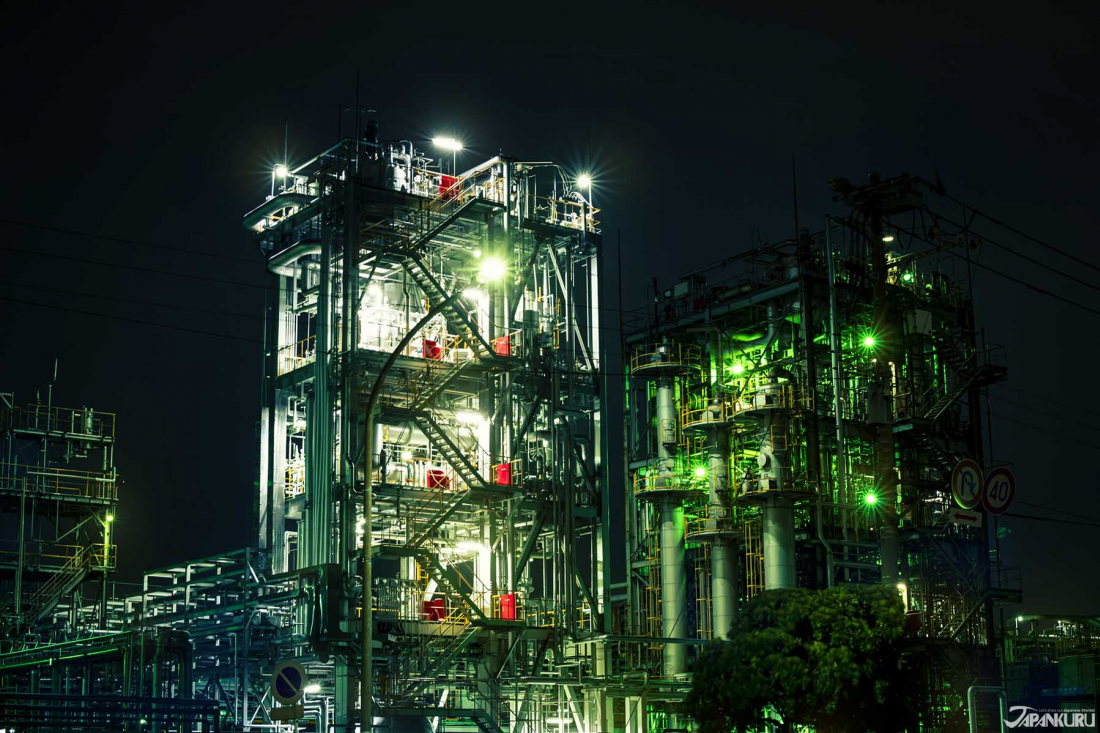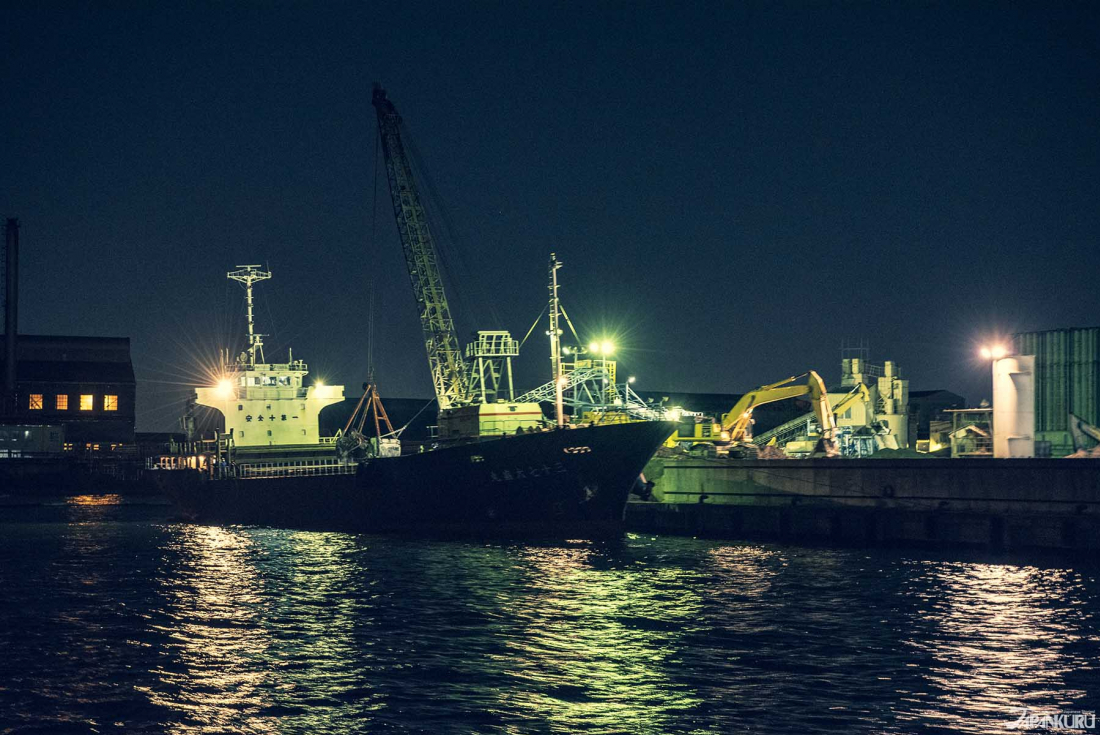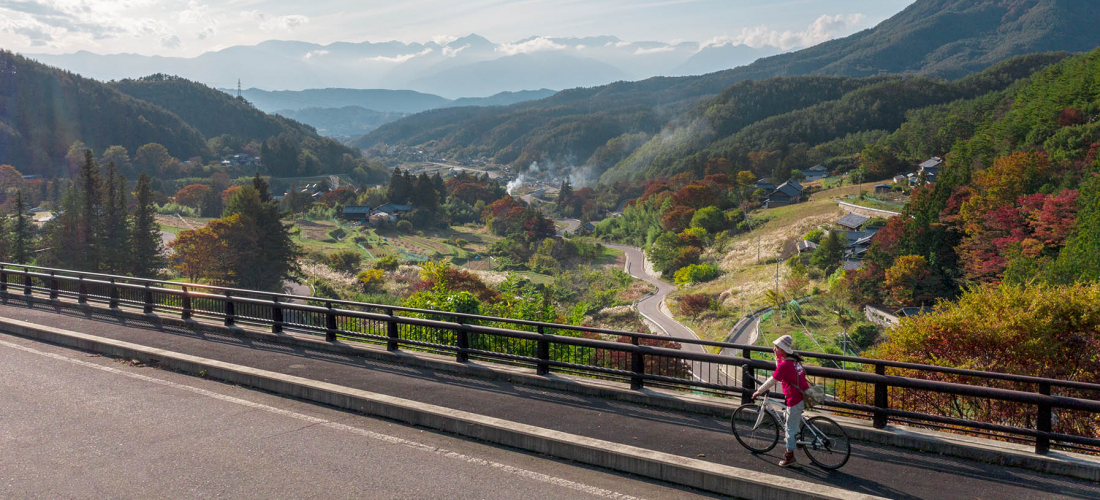
CONTENTS
Atmosphère rétro, vues nocturnes uniques et musées passionnants – découvrez le quartier Tama de Kawasaki!
Un lieu de voyage plein de nostalgie et de superbes vues nocturnes des usines flamboyantes
La ville de Kawasaki (川 崎 市), à seulement 30 minutes du centre de Tokyo, est célèbre pour être un "bel endroit pour des paysages industriels".
Le Tama Ward de Kawasaki est particulièrement recommandé pour les voyageurs qui aiment le rétro. Avec un musée en plein air qui abrite des maisons japonaises traditionnelles de tout le pays (et une architecture de toutes sortes), et un autre dédié au créateur du célèbre manga Doraemon, Fujiko · F · Fujio, et bien d'autres choses, il y a de quoi remplir un bel itinéraire d'une journée.
Le musée en plein air de maisons traditionnelles
Voilà le musée en plein air des maisons traditionnelles (ou Nihon Minka-en), situé dans le quartier Tama de la ville de Kawasaki, où des maisons japonaises à l'ancienne sont exposées en plein air. (Ces maisons japonaises construites avec une architecture traditionnelle sont appelées kominka, 古 民家.) Rendez-vous y pour vous promener entre 25 maisons différentes désignées comme précieuses ressources culturelles de tout le Japon et admirer les différentes architectures.
Japan Open-Air Folk House Museum (日本民家園, Nihon Minka-en)
Adresse: 7-11 Masugata, Tama-ku, Kawasaki, Kanagawa
Par train: 22 mns depuis Shinjuku sur la ligne Odakyu jusqu'à la gare Mukogaoka-Yuen, puis 13 mns de marche depuis la sortie Sud.
Par bus: De la gare Mukogaoka-Yuen sortie Sud, prendre les bus "た83" ou "溝19" jusqu'à l'arrêt Ikuta Ryokuchi Iriguchi.
Horaires: Mar à Oct Oct 9:30 – 17:00 / Nov à Fev 9:30 – 16:30
Fermé: Lundi (à part les jours fériés, dans ce cas, le musée fermera le jour suivant à la place)/ Dec 29 à Jan 3
Tarifs: 500 yens / Etudiants + de 14 ans 300 yens / Seniors (65+) 300 yens / Gratuit enfant
Official Website (en)
Non seulement vous pouvez vous promener dans le parc et voir de près les jolies maisons d'époque, mais le musée offre également des opportunités de découvrir des éléments de la vie de tous les jours d'autrefois!
25 maisons traditionnelles toutes de formes différentes
Même si ces maisons peuvent toutes être décrites avec le mot japonais kominka, ou simplement appelées maisons folkloriques, quand nous disons variées, nous voulons dire variées. Les formes des maisons et la façon dont elles ont été construites changent en fonction de l'époque de leur construction, de leur emplacement d'origine et même de l'environnement, ce qui signifie que vous pouvez en apprendre beaucoup sur les origines de la maison en regardant attentivement. Bien sûr, les maisons sont un peu trop grandes pour toutes les voirs d'un coup, donc à l'intérieur de la principale zone d'exposition du musée,vous trouverez un diorama avec des miniatures de toutes les maisons, ce qui facilite l'identification et la découverte de ces dernières.
La collection du musée ne comprend pas seulement des maisons d'habitation. Ils ont également des bâtiments entiers tel que cette scène de théâtre traditionnelle pour des spectacles. On dirait que le Japon aime le théâtre depuis longtemps! (Apparemment, cette scène avait surtout l'habitude d'accueillir des spectacles de kabuki.)
Le bâtiment a été construit spécifiquement pour être utilisé pour des productions scéniques, c'est pourquoi il dispose un dispositif intégré dans le sol pour tourner manuellement une partie de la scène! De De nos jours, les modifications nécessaires pour un changement de scène peuvent être effectuées en appuyant simplement sur un bouton, mais à l'époque, les gens ne pouvaient pas compter sur une technologie aussi avancée, et les décors étaient déplacés à l'huile de coude, grâce à un dispositif du nom de "naraku" (奈 落). Apparemment, il fallait 8 hommes adultes pour pousser les leviers nécessaires pour faire tourner la plateforme! (Attention: la zone naraku du bâtiment n'est pas actuellement ouverte au public!)
Faites l’expérience de la teinture indigo traditionnelle japonaise
Dans le Dentou-Kougeikan (bâtiment artisanal traditionnel) du musée, les visiteurs peuvent s'essayer à une méthode japonaise traditionnelle de teinture des tissus à l'aide d'indigo, appelée aizome (藍 染), qui est transmise depuis des générations. Aizome utilise un colorant fabriqué à partir d'indigo fermenté, qui est ensuite trempé dans de la soie, du coton ou du lin pour lui donner un bleu profond. Au musée, vous pouvez participer à un atelier payant et apprendre le métier par un pro, en teignant votre propre mouchoir ou écharpe dans le processus.
Durant l'atelier, avant d'immerger le tissu dans la teinture, vous utilisez en fait du fil, des élastiques et des billes pour créer des zones qui ne seront pas exposées à la teinture. Au cours de ce processus, vous créerez votre propre motif unique pour décorer un mouchoir ou une écharpe!
Après avoir bien attaché le tissu, il est immergé dans le colorant indigo, puis essoré et exposé à l'air libre dans un processus qu'on répète trois ou quatre fois.
Enfin, après avoir soigneusement rincé l'excès de colorant dans de l'eau propre, vous pouvez étaler le tissu et voir le résultat! Le produit fini peut encore comporter un peu de colorant, donc une fois qu'il est complètement sec, vous devez vous assurer de le laver deux ou trois fois avant de laisser le tissu toucher votre peau.
Aizome Indigo Dye Workshop
Périodes de l'atelier: 10:00~ / 13:00~ / 14:30~
Temps requis: 1h/1h30
Tarifs: Mouchoir 700 yens / Bandanas 880 yens
Official Page (en)
Le musée de Fujiko・F・Fujio à Kawasaki
ⒸFujiko-Pro
Ce musée a été conçu pour donner aux visiteurs une chance d'apprécier le travail de l'artiste manga Fujiko · F · Fujio (célèbre pour les mangas emblématiques et l'anime Doraemon) de différentes manières. Le musée possède des espaces où les visiteurs peuvent lire ses mangas et également voir des illustrations de Fujiko · F · Fujio autres que Doraemon, en plus de visiter de jolis spots photo, un café et une boutique de cadeaux.
ⒸFujiko-Pro
Pour les fans de mangas classiques, le style et les expositions vous laisseront certainement nostalgique. On a l'impression qu'à tout moment on pourrait se retrouver à l'intérieur d'une page de dessin!
ⒸFujiko-Pro
Vous êtes-vous déjà demandé dans quel type d'espace les nombreuses œuvres de Fujiko · F · Fujio ont été créées? Vous pouvez trouver la réponse ici!
Intéressant … très intéressant … c'est donc ça l'atmosphère dans laquelle sont nés certaines des histoires les plus populaires du monde du manga?
ⒸFujiko-Pro
Au deuxième étage, vous trouverez le Manga Corner, qui offre également une "expérience légèrement mystérieuse".
ⒸFujiko-Pro
Au rez-de-chaussée du musée, outre les bâtiments eux-mêmes, il y a aussi des espaces extérieurs où les visiteurs peuvent rencontrer de vieux amis: leurs personnages préférés! Prendre une photo commémorative avec Doraemon sur l'aire de jeux sur le toit entourée de verdure est à ne pas râter.
ⒸFujiko-Pro
Le Museum Cafe au troisième étage vend des plats originaux très mignons. Apparemment, ils proposent également un certain nombre de plats à durée limitée pour chaque saison!
ⒸFujiko-Pro
La boutique de cadeaux sur le toit du musée (appelée "藤子 屋", ou Fujikoya, en japonais) propose une collection de produits en édition limitée, à commencer par les crêpes dorayaki adorées par Doraemon.
ⒸFujiko-Pro
À l'intérieur de ces jolies boîtes au design Doraemon et Dorami se trouvent huit guimauves, imprimées avec huit images différenets, ce qui rend leur ouverture un plaisir!
Lorsque vous visitez Kawasaki, vous devez vous arrêter au musée Fujiko · F · Fujio pour vous imprégner de son universer nostalgiques et vous procurer de jolis souvenirs!
Fujiko·F·Fujio Museum
Adresse: 2-8-1 Nagao, Tama-ku, Kawasaki, Kanagawa
Accès: De la ligne Odakyu gare de Noborito, prendre un bus pour Fujiko·F·Fujio Museum, ou marcher 16 mns depuis la gare de Mukogaoka-Yuen
Horaires: 10:00 – 18:00
Tarifs: Adultes 1,000 yens / de 12 à 18 ans 700 yen / Enfants 4ans et + 500 yens / Gratuit pour les bébés
Official Website (en)
Soit dit en passant, si vous prévoyez d'aller du musée en plein air de la maison folklorique japonaise au musée Fujiko · F · Fujio, vous pourrez peut-être faire le voyage en bus, alors vérifiez l'horaire! Un bus à destination de la gare de Noborito qui relie le musée des maisons traditionnelles au musée Fujiko · F · Fujio circule 4 fois par jour!
Horaire des bus: Musée en plein air des maisons folkloriques ➤ Musée Fujiko·F·Fujio
Semaine: 10:57 / 12:42 / 14:28 / 16:38
Weekends: 10:38 / 12:58 / 14:48 / 16:36
(Ne passe pas lorsque le musée Fujiko·F·Fujio est fermé)
Les paysages de nuit industriels de la ville de Kawasaki
Tourisme dans la ville de Kawasaki “croisière nocturne entre les usines”
Kawasaki City est une zone située directement sur la baie de Tokyo, regorgeant d'usines. Ces usines fonctionnent 24 heures sur 24, et il y a beaucoup d'endroits où les lumières brillent à toutes les heures de la journée, tous les jours de l'année. Les usines brillamment éclairées de la baie sont largement reconnues comme une attraction mystérieusement belle du Japon, et est une visite nocturne est à ne pas manquer!
Les meilleurs endroits pour voir le paysage industriel sont un peu séparés du centre de Kawasaki, donc des bus vous y emmèneront, mais la meilleure façon de tout voir à la fois est de monter sur un bateau de croisière!
À l'intérieur du bateau se trouve un espace avec des tables et des chaises où vous pourrez même apporter votre propre nourriture et vos boissons pour en profiter à bord! Bien que, pour des raisons de sécurité, l'alcool ne soit pas autorisé. Les billets ne peuvent pas être achetés le jour même, alors faites vos réservations à l'avance ici. Il y a un bus qui vous emmène directement au quai, vous pouvez donc simplement vous réunir avec d'autres visiteurs devant l'hôtel Nikko à la sortie Est de la gare de Kawasaki et monter quand il est temps de partir.
Promenade en bâteau
Horaires et réservations
Tarifs: Adultes (12 ans et +) 4000 yens / – de 12 ans 3 000 yens (carte de crédit autorisée)
Lieu: rassemblement devant l'Hotel Nikko à la sortie Est de la gare de Kawasaki
Horaires du rassemblement: Mar à Sept 18:20 / Oct à Fev 17:20
Si vous allez voir la vue en bus ou par un autre moyen de transport, assurez-vous de vous arrêter au pont d'observation de Kawasaki Marien! L'entrée est totalement gratuite et vous pouvez voir à quoi ressemble le paysage nocturne industriel.
Kawasaki Marien Observation Deck
38-1 Higashiogishima, Kawasaki-ku, Kawasaki, Kanagawa
Accès: De l'arrêt de bus de la gare de Kawasaki #12, prendre le bus "川07" pour Daiwa Corporation Mae, puis marcher 10 mns.
Si vous souhaitez admirer la vue avec votre petit.e ami.e, une promenade sur le pont du parc Higashi-Ogishima East vous offre une vue magnifique sur les lumières de l'usine.
Higashi-Ogishima East Park
58-1 Higashiogishima, Kawasaki-ku, Kawasaki, Kanagawa
Accès: depuis la gare de Kawasaki, arrêt de bus #12, prendre le bus "川05" pour Higashi-Ogishima East Park.
Si vous voulez voir les usines de près, arrêtez-vous au Kawasaki Konbinado Chidoricho Yard, pour admirer un paysage qui semble tout droit sorti d'un anime de science-fiction futuriste. C'est un endroit idéal pour les photographes qui aiment prendre des photos de nuit!
Kawasaki Konbinado Chidoricho Yard
14-14 Chidoricho, Kawasaki-ku, Kawasaki, Kanagawa
Accès:Depuis la gare de Kawaski, arrêt de bus #12, prendre le bus "川04" pour Shiei Futo.
Vivez une expérience unique dans la ville de Kawasaki, à la sortie de Tokyo!
La ville de Kawasaki est composée de sept quartiers différents, chacun avec ses propres caractéristiques et attractions, et nous n'avons parcouru que quelques-uns des endroits rétro et amusants que la ville a à offrir. Au bord de la baie de Tokyo, Kawasaki donne le sentiment d'être une grande ville, mais elle offre également des temples, des rues commerçantes, des délices culinaires, un peu de vie nocturne et de bons endroits où séjourner, ce qui signifie qu'il y a toujours quelque chose de nouveau à apprécier.
Pour les voyageurs qui aiment les endroits avec une atmosphère détendue et un style rétro, le Tama Ward de Kawasaki City est fortement recommandé!
Vous êtes allé à Kawasaki ou vous y allez bientôt? Faites nous part de votre expérience sur twitter, instagram, et facebook!
Details
NAME:Tama Ward, Kawasaki City, Kanagawa (神奈川県川崎市多摩区)
MAP




































 >> Find out more at Japankuru.com! (link in bio)
#
>> Find out more at Japankuru.com! (link in bio)
#





 The Robot Restaurant is gone, but the Samurai Restaurant is here to take its place. Check it out, and don't forget your coupon!
The Robot Restaurant is gone, but the Samurai Restaurant is here to take its place. Check it out, and don't forget your coupon!
 신주쿠의 명소 로봇 레스토랑이 사무라이 레스토랑으로 부활! 절찬 쿠폰 발급중
신주쿠의 명소 로봇 레스토랑이 사무라이 레스토랑으로 부활! 절찬 쿠폰 발급중
 18歲以上才能入場的歌舞秀,和你想的不一樣!拿好優惠券去看看~
#tokyo #shinjuku #samurairestaurant #robotrestaurant #tokyotrip #도쿄여행 #신주쿠 #사무라이레스토랑 #이색체험 #할인이벤트 #歌舞伎町 #東京景點 #武士餐廳 #日本表演 #日本文化體驗 #japankuru #japantrip #japantravel #japanlovers #japan_of_insta
18歲以上才能入場的歌舞秀,和你想的不一樣!拿好優惠券去看看~
#tokyo #shinjuku #samurairestaurant #robotrestaurant #tokyotrip #도쿄여행 #신주쿠 #사무라이레스토랑 #이색체험 #할인이벤트 #歌舞伎町 #東京景點 #武士餐廳 #日本表演 #日本文化體驗 #japankuru #japantrip #japantravel #japanlovers #japan_of_insta
 코지마 x 빅 카메라 쿠폰으로 일본 가전 제품 쇼핑하기
#pr #japankuru #japanshopping #kojima #biccamera #japaneseskincare #yaman #dji #osmopocket3 #skincaredevice #日本購物 #美容儀 #相機 #雅萌 #日本家電 #일본여행 #면세 #여행꿀팁 #일본쇼핑리스트 #쿠폰 #일본쇼핑 #일본브랜드 #할인 #코지마 #빅카메라 #japankurucoupon
코지마 x 빅 카메라 쿠폰으로 일본 가전 제품 쇼핑하기
#pr #japankuru #japanshopping #kojima #biccamera #japaneseskincare #yaman #dji #osmopocket3 #skincaredevice #日本購物 #美容儀 #相機 #雅萌 #日本家電 #일본여행 #면세 #여행꿀팁 #일본쇼핑리스트 #쿠폰 #일본쇼핑 #일본브랜드 #할인 #코지마 #빅카메라 #japankurucoupon











































